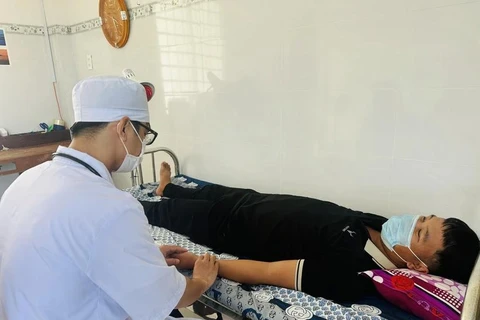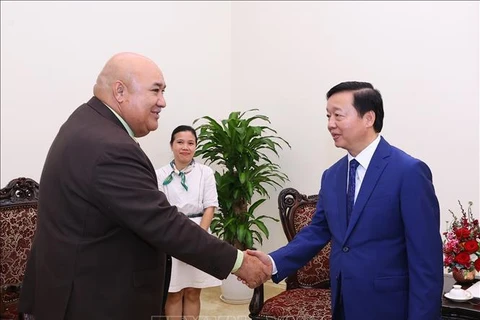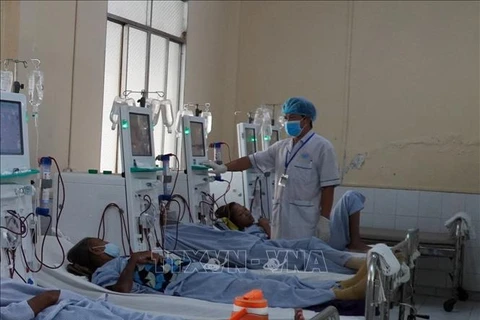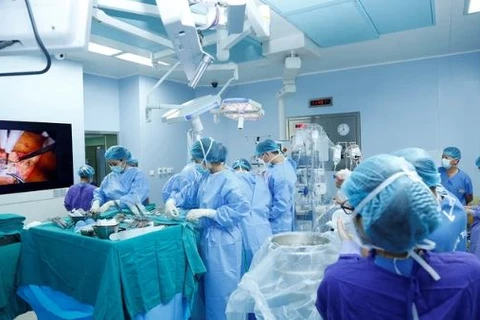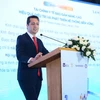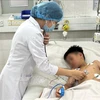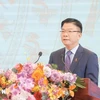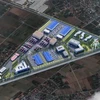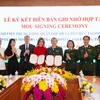Hanoi (VNA) - The Investing and Innovating for Grassroots Health Service Delivery Project is among major healthcare projects, with a total budget of approximately 120 million USD.

The Investing and Innovating for Grassroots Health Service Delivery Project uses loans and non-refundable aid from the World Bank (WB) and began in 2020. It is considered an important project for the healthcare sector in general, particularly for the grassroots healthcare network in 13 disadvantaged provinces participating in the project.
Regarding the ongoing project, Associate Professor Phan Le Thu Hang, Deputy Director of the Department of Financial Planning (Ministry of Health), and Director of the Central Project Management Board, stated that the project is designed to enhance the quality and efficiency of healthcare services in the grassroots healthcare network across 13 provinces, including Ha Giang, Bac Kan, Son La, Yen Bai, Hoa Binh, Quang Binh, Quang Tri, Quang Ngai, Ninh Thuan, Tra Vinh, Hau Giang, Bac Lieu, and Long An.
The project adopts a relatively comprehensive investment strategy: upgrading infrastructure, modernising medical equipment, training healthcare personnel, improving health education communication activities, supporting the completion of policies related to primary healthcare, and piloting innovative models of primary healthcare service.
The project is expected to enhance the capacity of the grassroots healthcare network, thereby contributing to ensuring health, increasing longevity, and improving the quality of life for people in challenging areas.

The project began on May 18, 2020, right when the COVID-19 pandemic broke out, facing many difficulties in the first two years. In this context, the project received direction from the Ministry of Health, efforts from the 13 provincial People's Committees, determination from the Central Project Management Board and provincial project management boards, and enthusiastic support from donors to drive activities towards achieving the best possible results.
According to the latest evaluation by the Ministry of Health and the World Bank, published in May 2024, after more than four years of implementation, the project is still rated as meeting the requirements. The World Bank acknowledges this as the best-rated project among the healthcare projects funded by the World Bank in Vietnam.

Regarding investment, 412 construction projects, including upgraded or newly built health stations and medical centers across 109 districts/towns in 13 provinces involved in the project, have been completed and put into use, reaching over 86% of the planned constructions. The remaining projects are all in the construction phase and are expected to be fully completed by November 2024.
Most provinces have also signed contracts to deliver essential equipment to health stations in their localities, thereby providing most health stations with additional equipment for professional work.
First and foremost, the success of the project hinges on the management capabilities of the localities involved, as they act as the investors for the project components within their respective areas.
Specifically, this includes the leadership and coordination ability of the provincial People's Committees, the capacity for coordination between relevant provincial departments (Department of Finance, Department of Construction, Department of Health, Provincial Project Management Board), and the management and operational capacity of the Provincial Project Management Board.
Highlighted achievements of the project include the quality checklist model applied to commune health stations, designed by experts from the Central Project Management Board, and the management model for treating non-communicable diseases at commune health stations with technical support from relevant units./.
